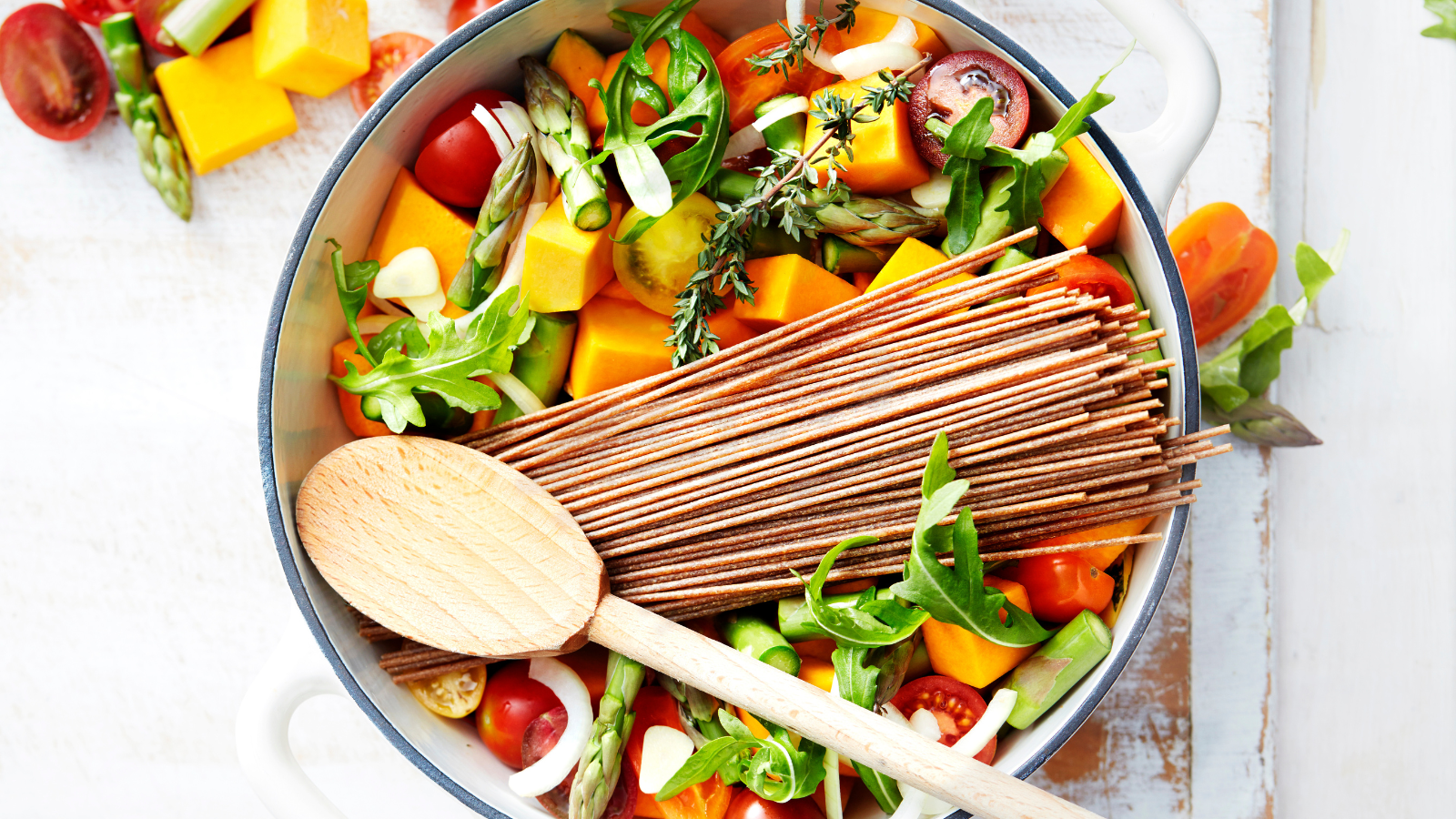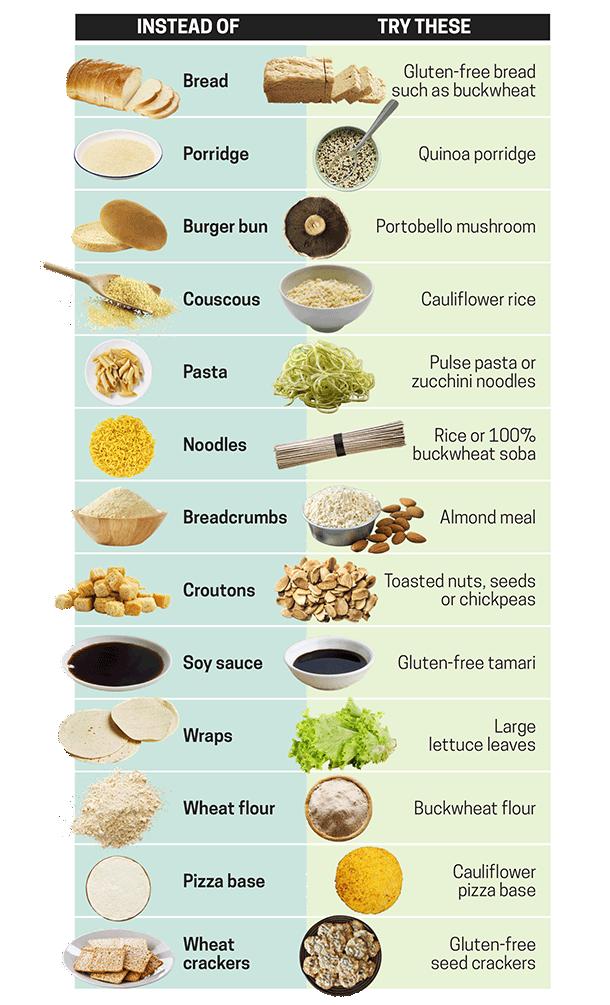What can I eat on a gluten-free diet?


How to eat gluten-free
Transitioning to a gluten-free diet may seem daunting, but over time you will get the hang of working out which foods are suitable for your gluten-free diet and discover exciting new recipe options.
To start with, there are plenty of foods that are naturally gluten-free. However, it’s still important to read all labels in case additives have been included in the packaging or processing, such as flour used to prevent frozen seafood from clumping and sticking together.
Also think carefully about the risk of cross-contamination when purchasing food from a buffet or pick-and-mix supermarket dispenser. If you are buying raw food ingredients in bulk that are unlabelled, always ask to see an ingredient-specification sheet.
Naturally gluten-free foods include
- Eggs
- Fresh fish, poultry, meats (without marinade)
- Fresh fruit and veggies
- Legumes including black beans, kidney beans, lentils and chickpeas
- Peanuts, tree nuts, seeds
- Plain milk and cheese
Gluten-free grains and flours include
- Almond meal
- Arrowroot
- Buckwheat
- Chickpeas and besan flour
- Lupin
- Maize cornflour (non-wheaten)
- Millet
- Polenta
- Potato
- Psyllium
- Quinoa
- Rice
- Sorghum
- Soy
- Tapioca
Tip: Not sure about an ingredient when cooking for people on a gluten-free diet? Just keep the packaging or recipe and show it to them so you can confirm the food is ok for them to eat.
Gluten-free cooking
Now you’ve stocked your fridge and pantry with gluten-free products it’s time to get cooking. But can you adapt your favourite recipes? What are the hidden traps with cross-contamination? And are there any tricks of the trade?
Adapting recipes to be gluten-free
These days there are plenty of gluten-free substitutes for popular cooking ingredients, and in many cases you can simply swap them in your recipes. Some simple swaps are gluten-free soy sauce in your stir-fries or zucchini noodles (zoodles) instead of pasta.
Unfortunately, this doesn't work so easily when adapting your favourite baking recipes. Gluten is often the key ingredient that helps bread and baked goods rise and form an elastic structure that traps air bubbles and creates a light and fluffy crumb. Simply switching the same amount of gluten-free flour doesn't always work, and your cake or loaf may sink or have a completely different texture and flavour.
A general rule of thumb is that when replacing flour containing gluten you need a combination of three different gluten-free flours plus a gum or thickener. Over time you will learn the properties of different gluten-free flours. Some are better for adding strength, while others create texture. So you may end up combining potato, rice and besan (chickpea) flours to achieve the same properties as plain (wheat) flour in a cake recipe, and add xanthan gum to provide the same rise and texture. However, in a bread mixture you may need a different combination of gluten-free flours altogether.
Gluten-free baking can take a bit of trial and error, so the easiest approach is to seek out fully tested recipes or use commercial products such as gluten-free pastry or pizza bases.
Tip: In most cases, gluten-free baked goods are best eaten on the day of baking, so freeze any leftovers.
How to minimise cross-contamination
Cross contamination is when a gluten-free ingredient, dish or product comes in contact with even minute traces of gluten and can happen quite easily.
However, maintaining a completely gluten-free kitchen is neither practical nor necessary (especially if other family members do not need a gluten-free diet). For most people, all it takes is a bit of extra vigilance with food preparation. Here are some simple tips to prevent cross-contamination:
- Store gluten-free products and ingredients in separate sealed containers and clearly label all foods in the pantry, fridge and freezer once they have been removed from the original packaging.
- Thoroughly clean breadboards, knives and other cooking utensils used in food preparation.
- Ensure appliances such as sandwich makers and grills are clean before preparing gluten-free foods.
- Use separate water for cooking or reheating gluten-free pasta. Use a separate strainer for gluten-free pasta or strain it first.
- Avoid dusting meat, fish or cake tins with flour containing gluten (including wheaten cornflour) before cooking.
Tips and tricks for following a gluten-free diet
Following a gluten-free diet means you may have to seek out new ingredients, foods and recipes, but you may find this opens up a whole new world of flavours and enjoyment of food. If you love pizza, why not try our tasty roasted beetroot, cottage cheese and pesto pizza on a clever gluten-free base or swap breadcrumbs for quinoa flakes when crumbing meat. If you focus on nutrient rich foods and good health while going gluten-free, you’ll be making nutritious choices.
Don’t forget to tell your friends, family and workmates about your new eating requirements. If they are hosting a dinner party or organising your office birthday cake they will appreciate a little prior warning.
Gluten-free swaps

